A question I hear at my talks regularly is “How will I line my trash can without a plastic bag?” With a nationwide ban on plastic shopping bags having gone into effect in Canada this past December, some of my Canadian readers may be grappling with this.
Keep your trash dry by composting
If you compost, you’ll divert most (if not all) of the wet stuff from your trash can. Do that and you may not need to line your bin at all. Or you can line it with newspaper. (More on that coming up.)
Wet stuff that can go into a compost bin
Fruit peels, scraps and pits. Apple cores, cherry stems, pomegranate rinds. They all break down quickly. Even avocado pits decompose in compost! (But you might want to make pink dye with them first.)
Vegetable peels and scraps. After I make vegetable broth out of vegetable scraps, the strained bits go on the pile. Even corn cobs—delicious in broth by the way—decompose surprisingly quickly in a compost heap. After a couple of weeks, you can easily break them up into one- or two-inch pieces, which speeds up their decomposition.
Grains, breads and pasta. Avoid adding pasta dripping with sauce and oil that can glop up your pile.
Tea leaves and coffee grounds. Sometimes I throw these directly on my rosebushes instead of in the compost bin. The roses love the coffee grounds especially. Paper coffee filters can also go in the compost.
Eggshells. These decompose faster if broken up into smaller pieces but I personally don’t bother doing the extra work.
Spent tissues, paper towels, napkins. Or opt for reusables that you can wash—and save money! I make handkerchiefs, unpaper towels and napkins, which are all pretty much the same thing—flannel quadrilaterals cut in various sizes. Go here for info on unpaper towels.
You can of course compost previously edible food that has gone south—whole apples or lettuce leaves or loaves of bread. Food does not belong in a landfill, where it emits methane, a greenhouse gas much more potent than carbon dioxide. Ideally, however, we would each eat all the food we buy—and save more money! Go here for 23 ways to reduce wasted food.
Bin liners
With food accounting for about 24 percent of municipal waste in the US, now that you compost, you have slashed the volume of your trash. Small bin liners made of newspaper may suffice for your resulting dry trash if you’d like to line the can.
We use the newspaper bags below to line our compost bin. They’re fun to make. Buying plastic bags is not.
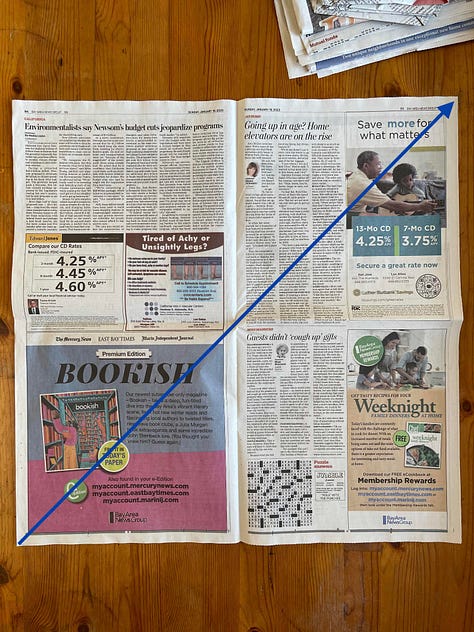
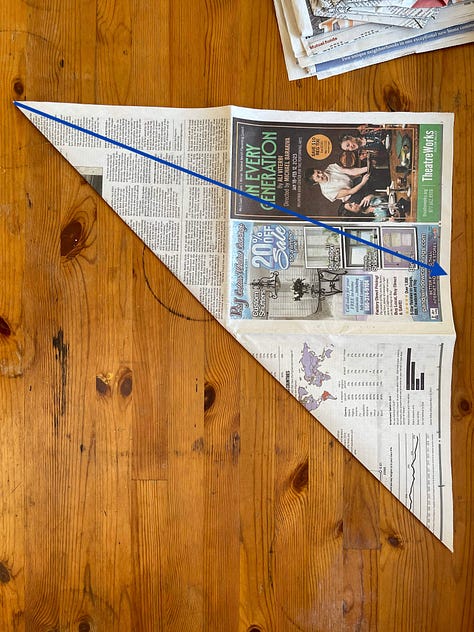
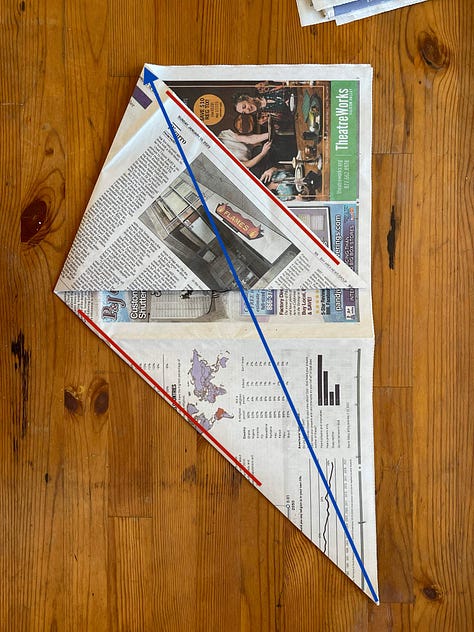



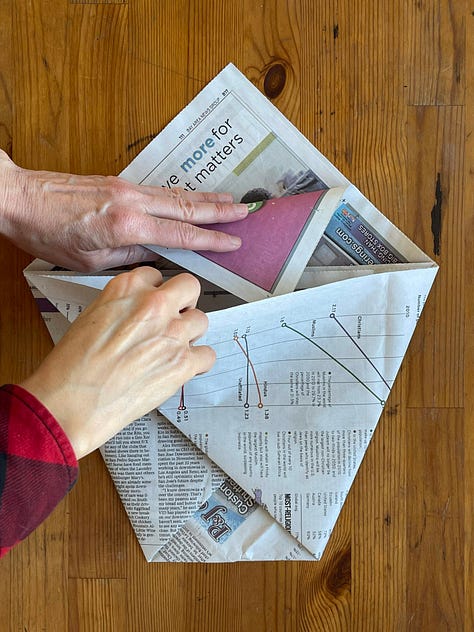
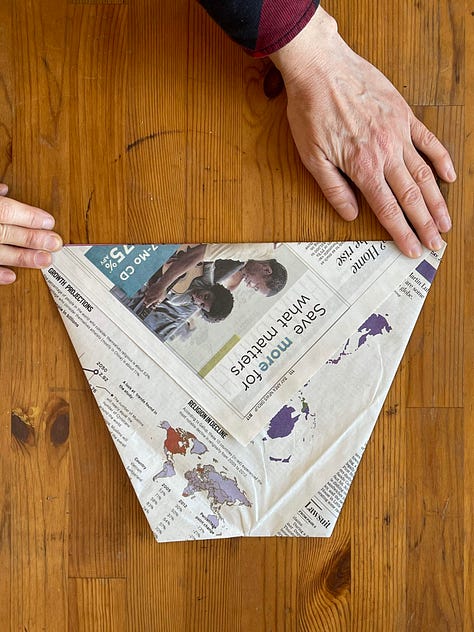
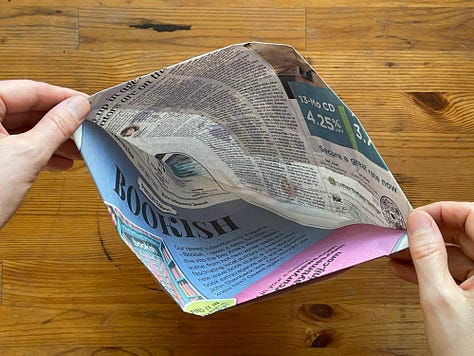
If you don’t have a yard for composting
Backyard composting requires, well, a backyard. If you live in an apartment building, try to convince your landlord to set up an outdoor compost bin. Say the words every landlord longs to hear: “You will save money.” If tenants divert food from the trash—remember, 24 percent of municipal waste—the cost of waste pickup may drop.
Other ways to compost without a yard:
Curbside green bins make composting easy for apartment dwellers—where green bin programs exist (and more and more cities have adopted them). Find out if your city has a green bin program or plans to start one. Depending on your city, you can likely add meat and dairy to your green bin, foods you don’t put in a backyard bin. (But try to avoid wasting these resource-intensive foods first!)
Drop-off sites may be available in your city. Community gardens sometimes accept food scraps, for example. The gardens often need all the compost they can get! New York City maintains a map of compost drop-off sites here. Your city may provide a similar resource. Some farmers’ markets also provide drop-offs for food scraps.
ShareWaste is like Tinder for food scraps. It matches eligible composters with eligible food scrap donors. Although some areas have very few participants, you may get lucky and find the compost bin of your dreams.
Vermicomposting is another option for composting indoors. You’ll keep a bin of red worms in a convenient location and feed them food scraps—with a few exceptions such as excessive citrus peels. Your worms will produce earthy-smelling, nutrient-rich material that you can add to houseplants or give to gardening friends. You can buy bins or build them. Many gardeners who compost outdoors also vermicompost indoors to reap the rich worm castings. This soil amendment is expensive to buy.
A bokashi bin ferments food scraps indoors. However, you eventually will need a location for burying the fermented food scraps outdoors. Meat and dairy can go into bokashi, unlike most other types of compost systems.
If you do have a yard for composting
Backyard composting is ideal even if your city does run a food scraps program. You won’t rely on trucks to haul your food scraps away and you’ll make a soil amendment in your yard for free. Sending these resources away only to spend money on fertilizers and mulch is inefficient at best.
Composting in a bin (or on the ground)
When I first began composting, I thought I needed to buy a special bin. But if you have a patch of grass you’d like to sacrifice in your yard or a small area of bare soil, you can start composting today directly on the ground. Or build an inexpensive bin out of chicken wire or wooden pallets.
The short version of how to maintain an outdoor compost pile, either in a bin or directly on the ground:
Throw kitchen scraps on the pile. There are green materials. You want a mix of green and brown.
Throw a handful of brown materials on top, such as dried leaves, hay (it should be organic hay, which can be very hard to find), pine needles or newspaper. By creating air pockets, brown materials prevent your pile from becoming a soggy, smelly mess.
Add moisture to the pile when necessary. Compost will dry out in the summer, so ideally, situate your pile in a shady spot. You want the pile about as damp as a wrung-out sponge.
Turn the pile every few weeks or so to inject it with air, which helps speed up decomposition. Very small piles will break down quickly without turning.
Once the pile becomes large, starts to break down and “cooks,” consider starting a second pile.
Remove the finished compost from the first pile, pull out any noticeably large pieces that haven’t broken down and move them to the new pile of food scraps. Work the compost from the finished pile into your soil where desired.
After using up the first finished pile, let the second pile cook and begin to throw scraps where the first pile had been. You’ll have one pile cooking and one pile piling up. (Hopefully, this doesn’t sound too much like Who’s On First…)
Done properly, compost does not smell at all. And it smells wonderful after it has broken down into black gold.
Pit composting
Skip steps 1 through 7 above and bury your food scraps instead. Dig holes in the yard, toss in food scraps, cover with soil and you’re done. You won’t need to maintain a bin or mix the finished compost into your soil.
Check out my award-winning cookbook!
Taste Canada silver for single-subject cookbooks
Second-place Gourmand cookbook award in the category of food waste
Shortlisted for an award from the International Association of Culinary Professionals




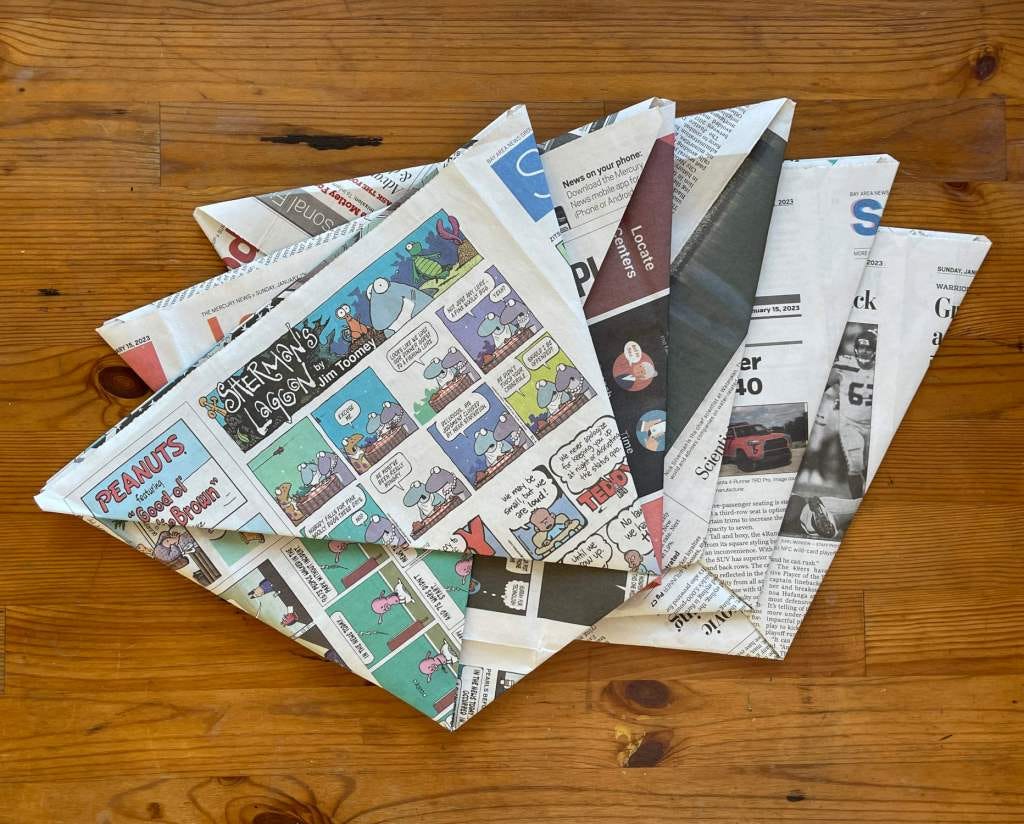
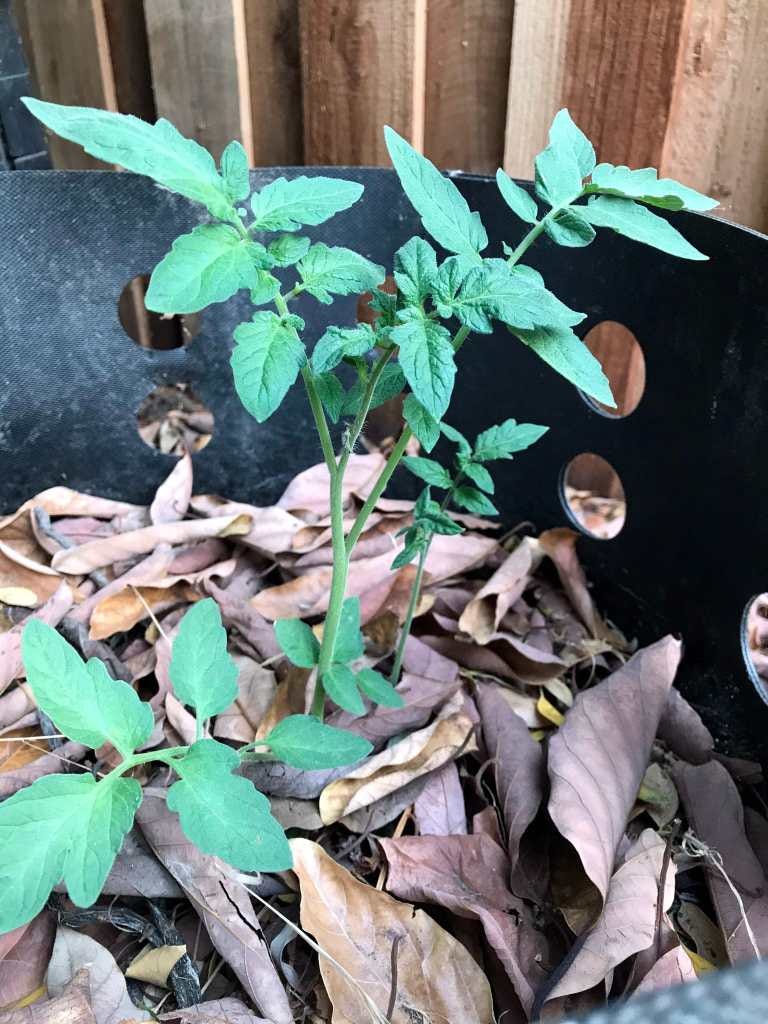


I don't have a lot of trash and I have a compost bin. I use old plastic or layered-paper bags from things like chicken feed or potting soil or pet food, things that come in 30-50 lb. increments. There's always something that comes in a smallish trash-bin sized bag. It works for us because, while we don't buy a lot of cat kibble or potting soil, we also have so little waste that our need matches the supply. We don't line the trash can that goes out to the street because it's often just the pet kibble bag inside. We staple the bag shut so it doesn't spill out into the street.
We don’t eat much meat, but when we do we put our scraps on what we call the “coyote rock” at the back of our property. Takes about a day or two and everything has been kicked clean! I’ve been trying to come up with a solution for kitty litter waste, but haven’t found a good solution. Any ideas?